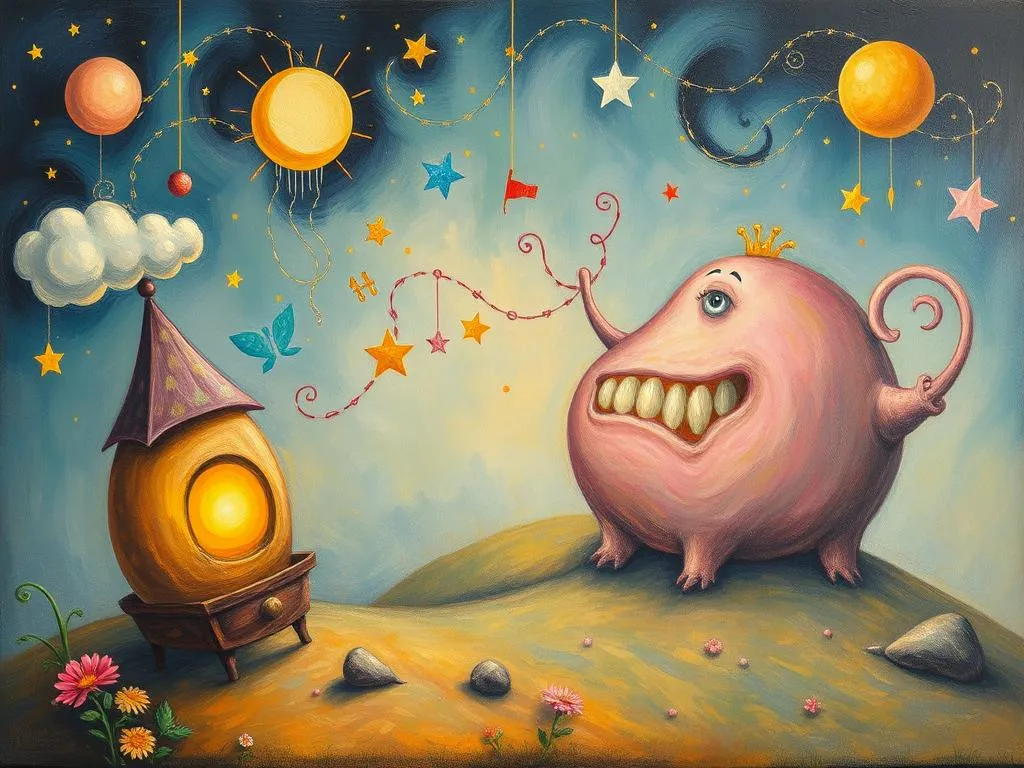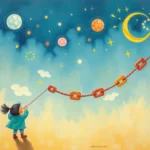
Introduction
Dreams have long fascinated humanity, serving as a bridge between our subconscious and conscious worlds. They are not merely random images or thoughts; rather, they can be filled with symbolism and meaning that can reveal insights about our waking lives. The phenomenon of witnessing dream symbols manifesting in reality is particularly intriguing. Many people experience uncanny moments where their dreams seemingly predict or reflect real-life events. This intertwining of dreams and reality captivates our imagination and raises profound questions about the nature of consciousness, intuition, and the interconnectedness of our experiences. Understanding the symbolism behind these dreams can not only deepen our self-awareness but also illuminate pathways in our lives.
Symbolism and Meaning
At the heart of dream interpretation lies the concept of symbols. Each symbol can carry multiple meanings, influenced by personal experiences, cultural backgrounds, and emotional states. Common symbols in dreams that often find their way into uncanny real-life experiences include animals, nature, destinations, and even interactions with people.
For instance, dreaming of water can signify a range of emotions—calmness, turbulence, or the subconscious mind’s depths. If someone dreams of navigating a turbulent sea and later finds themselves facing a challenging situation in their waking life, the dream may serve as an omen or a reflection of their emotional state. Alternatively, a calm river in a dream might suggest peace and clarity, hinting that the dreamer is on the right path in their waking life.
Animals frequently appear in dreams as symbols of instincts or aspects of the self. A dream featuring a wolf might represent a need for independence or a warning about betrayal, while a gentle dove could symbolize peace and love. If an individual later encounters a wolf in a significant way, it may reinforce their need to be vigilant or embrace their instincts.
Nature elements also play a crucial role in dream symbolism. Dreaming of a forest could represent a journey into the unknown, a search for clarity, or even a desire to reconnect with one’s roots. This dream might resonate when the dreamer faces uncertainty or a major life decision. Real-life experiences that echo these themes can ignite insights and provoke crucial self-reflection.
Moreover, the people we encounter in our dreams can represent different facets of ourselves or our relationships. Dreaming of a loved one might signify a need for connection or support, while an estranged friend may indicate unresolved feelings or unhealed wounds. If these individuals suddenly reappear in the dreamer’s life, it often prompts an exploration of these feelings, suggesting that the dream has provided a premonition of reconciliation or confrontation.
Understanding these symbols can help individuals make sense of their experiences and discern their meanings. Reflecting on how these symbols resonate with personal circumstances can lead to profound insights into one’s emotional landscape, relationships, and life choices.
Key Scenarios and Variations
While the core symbols may remain consistent, the scenarios surrounding these dreams can vary widely, leading to different interpretations. For example, consider the common dream of falling. This scenario often reflects feelings of insecurity or loss of control. If a dreamer experiences falling and later faces a situation where they feel overwhelmed, the two experiences become intertwined, emphasizing the emotional weight of the dream.
Alternatively, a dreamer might experience flying. Flying dreams are often associated with freedom, liberation, and the ability to rise above challenges. If someone dreams of soaring through the sky and subsequently finds themselves achieving a significant goal or overcoming an obstacle, the dream serves as a powerful affirmation of their capabilities, underpinning the notion that their aspirations are within reach.
Another variation can be represented by chase dreams, where the dreamer is pursued by a figure or entity. This type of dream often symbolizes avoidance of a situation or emotion in waking life. If the dreamer later encounters a scenario that evokes feelings of fear or anxiety—like public speaking or confronting a difficult relationship—they may recognize the connection to their dream. This awareness could prompt them to confront the underlying issues rather than avoid them.
Nightmares also play a critical role in understanding the relationship between dreams and reality. They often surface in response to stress, trauma, or unresolved fears. A recurring nightmare about being lost in a dark place might highlight feelings of uncertainty or fear of the unknown in the dreamer’s life. If this individual later finds themselves at a crossroads, faced with a significant decision, the nightmare becomes a powerful symbol of their emotional state, urging them to confront their fears and seek clarity.
The variations in scenarios reveal how the same dream symbols can evoke different emotions and insights based on the context in which they appear. Recognizing these nuances allows for a more profound understanding of the self and can guide one toward meaningful changes in their waking life.
Real-Life Connections and Takeaways
Connecting dreams with real-life experiences can be a transformative journey. By exploring the themes and symbols within dreams, individuals can uncover deeper insights into their emotional states, relationships, and aspirations. Engaging in self-reflection after experiencing such dreams can yield valuable revelations.
For instance, after a dream involving water, a dreamer might consider their emotional state. Are they feeling overwhelmed or at peace? Reflecting on the dream can illuminate areas of their life that require attention or affirmation. If their waking life mirrors the dream’s message, it might encourage them to embrace necessary changes or acknowledge their emotional needs.
Keeping a dream journal can be an effective practice for those wanting to delve deeper into their dreams. By documenting dreams regularly, individuals can identify patterns, recurring symbols, and emotional themes. This practice encourages self-awareness and can help clarify the connections between dreams and waking life experiences. Over time, the journal can become a rich tapestry of insights that guide personal growth and understanding.
Moreover, engaging in discussions about dreams with trusted friends or a therapist can provide fresh perspectives. Sharing dreams allows for collaborative interpretation, highlighting aspects that one might overlook. This exchange can foster a sense of community and support, emphasizing the shared human experience of dreaming.
It is essential to approach dream interpretation with an open mind. Each individual’s experience is unique, and while common symbols can offer guidance, personal insights and feelings ultimately shape the meaning. As you reflect on your dreams, consider how they relate to your current life situations, emotional challenges, or personal aspirations.
In conclusion, dreams that blur the line between reality and symbolism can offer profound insights into our lives. They invite us to reflect on our emotions, confront our fears, and embrace our potential. By understanding the symbols and scenarios that populate our dreams, we can gain clarity and direction in our waking life. So, the next time you encounter a dream that resonates deeply, take a moment to explore its meaning—it just might illuminate a path toward greater self-awareness and fulfillment.







